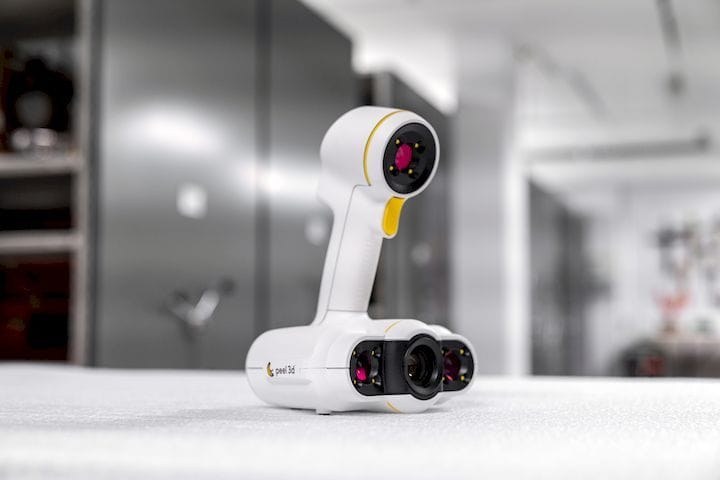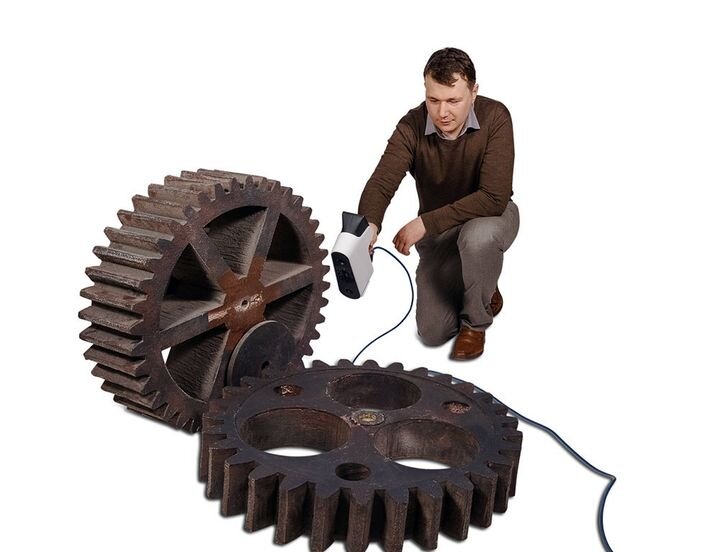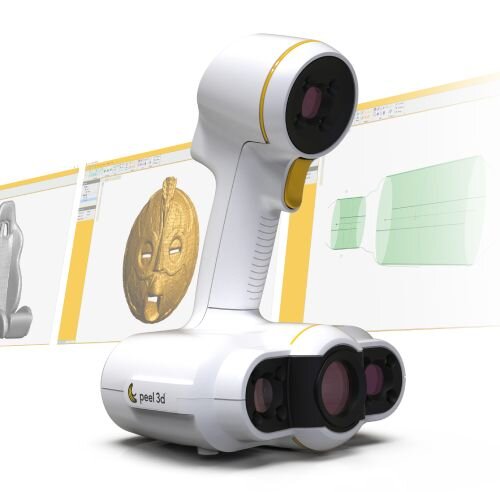![The peel 2 handheld 3D scanner [Source: peel 3D]](https://fabbaloo.com/wp-content/uploads/2020/05/image-asset_img_5eb097d7a1b8e.jpg)
peel 3D announced the peel 2, an advanced handheld 3D scanner.
The company has produced powerful, but inexpensive, handheld 3D scanners for a couple of years now, beginning with the very popular peel 1 device. They say it is now sold in 30 countries worldwide.
One of the main reasons for the popularity of the peel 1 was its price point: at the time it was introduced it was spectacularly less expensive than most of the other handheld 3D scanning options. In some cases, handheld 3D scanners can cost up to an incredible US$75K or more.
The peel 1 broke that barrier by offering a competent, professional device that was priced at only US$5,990. Combined with the accompanying software, their system was able to produce very good quality 3D scans with reasonable ease-of-use in operations.
Now they’ve announced the peel 2. While the name of the product might be entirely predictable, the features were not. Of most interest is that the new device includes not two, but three cameras.
Cameras are the core element of handheld 3D scanners, as they provide the platform for composing 3D structure from images, just like your eyes do. Two cameras show a single structure from slightly different — but precisely known — perspectives, allowing the software to compose a 3D point cloud.
![Handheld 3D scanning with the peel 2 3D scanner [Source: peel 3D]](https://fabbaloo.com/wp-content/uploads/2020/05/image-asset_img_5eb097d80befc.jpg)
But adding a third camera simply increases the accuracy considerably, as each point can be measured from three directions, not just two. For this, peel 3D says:
“Borrowed from high-end 3D scanners, peel 2’s new integrated colour capture functionality opens up a whole new world of possibilities for its users. They will finally be able to archive objects in high definition and in their original colours. Among other things, they can now capture design details and annotations found on an object, as well as monitor the progress and accuracy of the surface colouring.”
![The peel 2 handheld 3D scanner includes a secure traveling case [Source: peel 3D]](https://fabbaloo.com/wp-content/uploads/2020/05/image-asset_img_5eb097d84e500.jpg)
Another major difference from the peel 1 is that the cameras capture color textures as well as the 3D structure. This is quite important for some applications, typically where the surface texture is important, such as capturing historic structures with markings on the surfaces, or capturing the human body.
The company has also improved the software — also version 2 — by adding a number of new functions.
The question is, have they been able to maintain their key price advantage? It seems so, as the new peel 2 handheld 3D scanner is priced at a reasonable US$7,490, only US$1,500 more than the peel 1.
Somehow they’ve managed to create a handheld 3D scanning package that combines high accuracy, full color capture and a low price. This should be a very successful product, and something any operation requiring frequent self-3D scanning capabilities should investigate.
Via peel 3D











